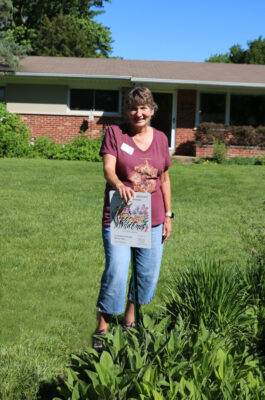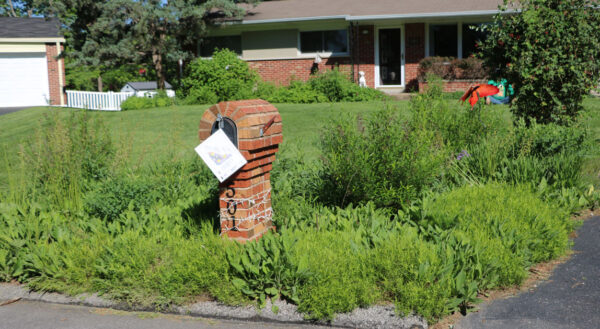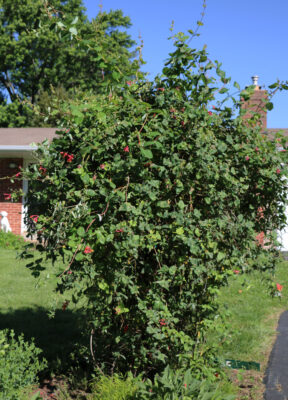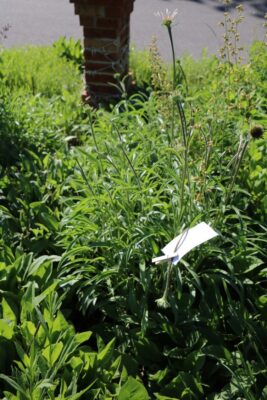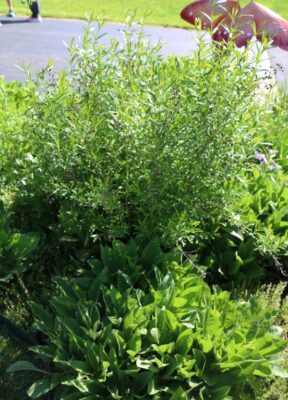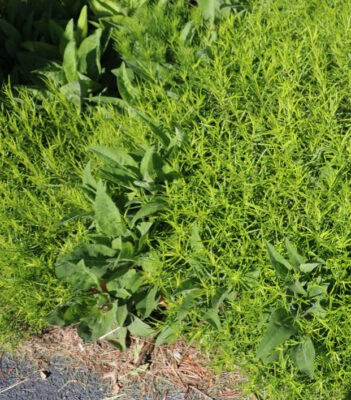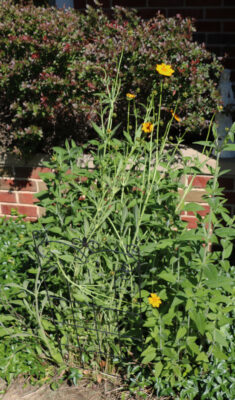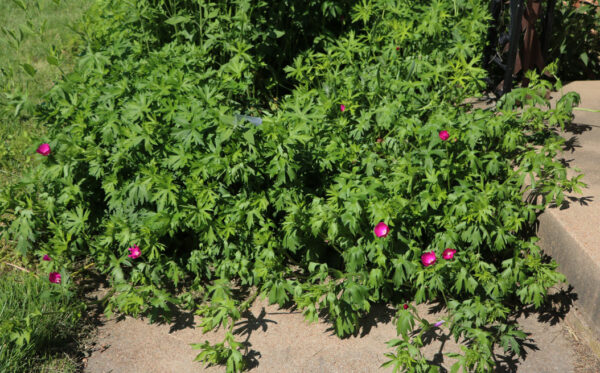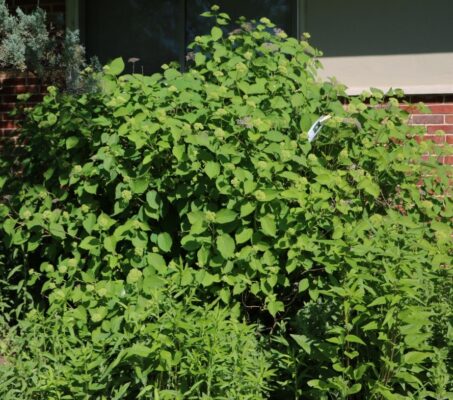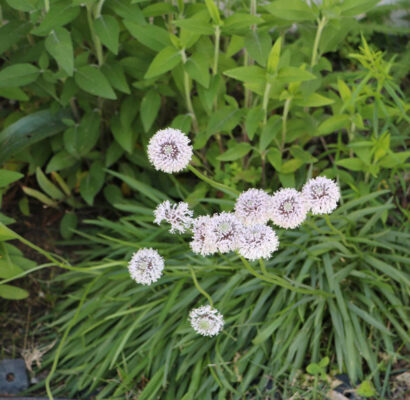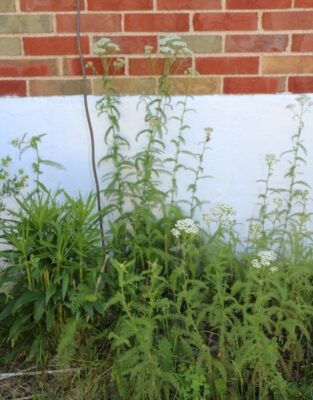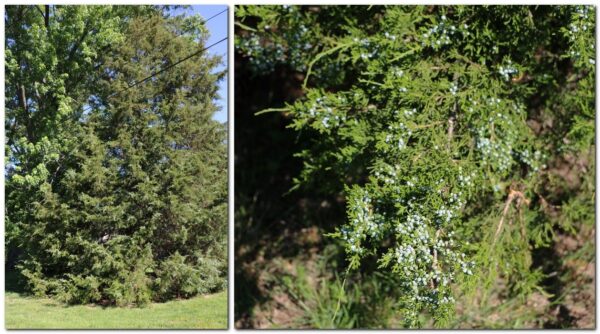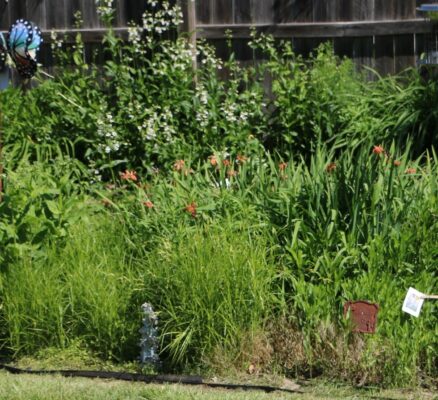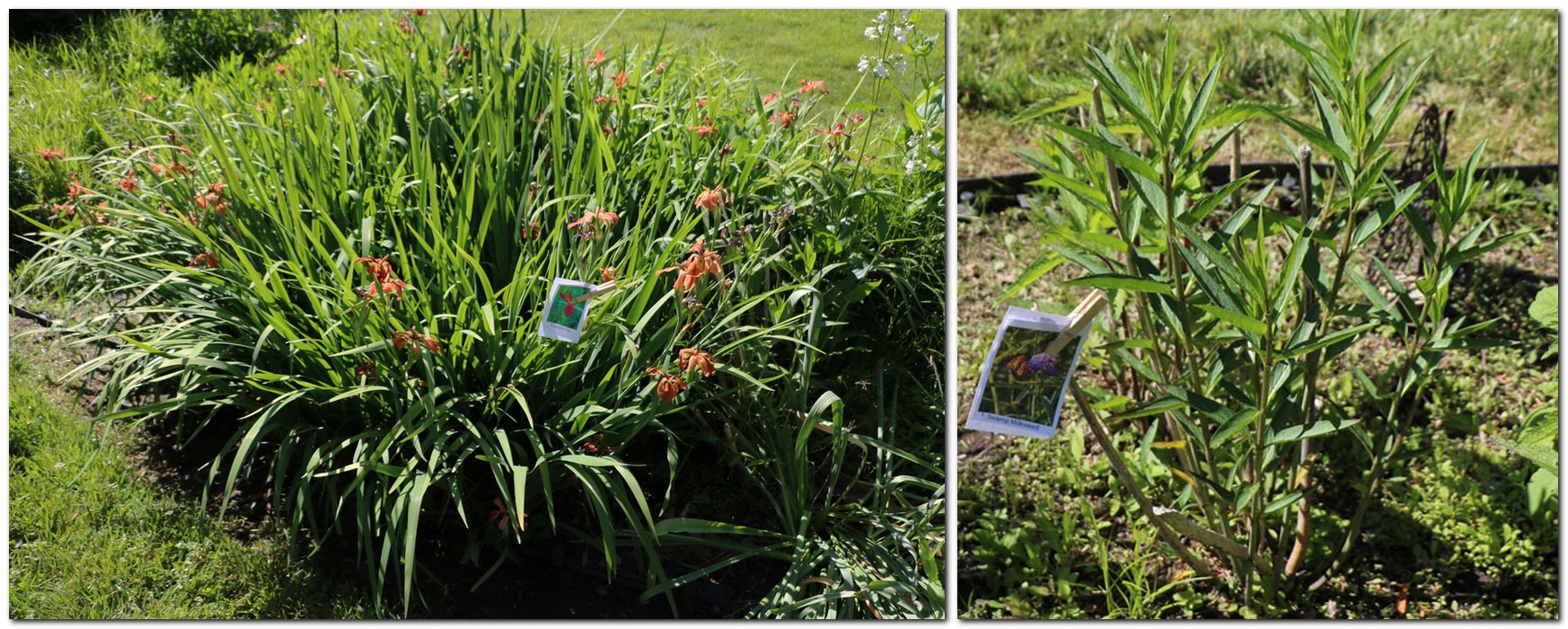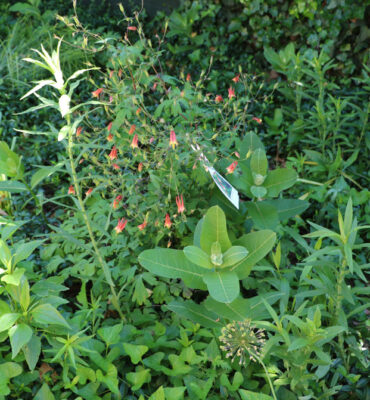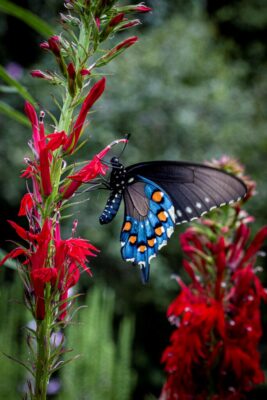Home of Diana Linsley
Saturday May 11 – 37 attendees
Wednesday May 15 – 44 attendees
Diana began her journey with native plants eight years ago when she bought her home and realized that her one third acre property had landscaping challenges. She immediately confronted them by removing invasive honeysuckle and non-native yews in the front yard. Friends and family helped her with the project and Ameren joined in the removal process since honeysuckle and poison ivy were so dense they were blocking access to the utilities.
These are the plantings in the front yard done in conjunction with the 2022 Landscape Challenge which Diana won.
These include coral honeysuckle, shrubby St. John’s wort, phlox, sunflower and blue false indigo.
Along the front of the house, Diana removed the yews she inherited from the previous owner and replaced them with hydrangea, purple poppy mallow, wild petunias, coneflowers and more.
The yard is a bird magnet, especially the large eastern red cedar (Juniperus virginiana) shown below where Diana has seen a variety of species including cardinal, mockingbird, blue jay and hummingbird. She plans to replace the invasive euonymus under the tree with native grasses.
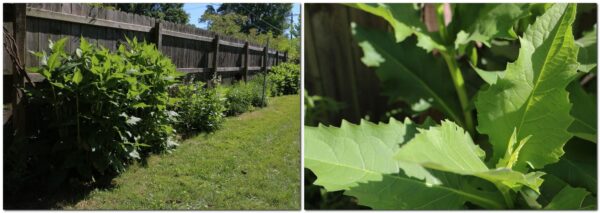
Cup plant (Silphium perfoliatum) grows along the fence line and can reach a height of twelve feet. This plant’s name derives from the fact that the leaves form a cup that collects rain.
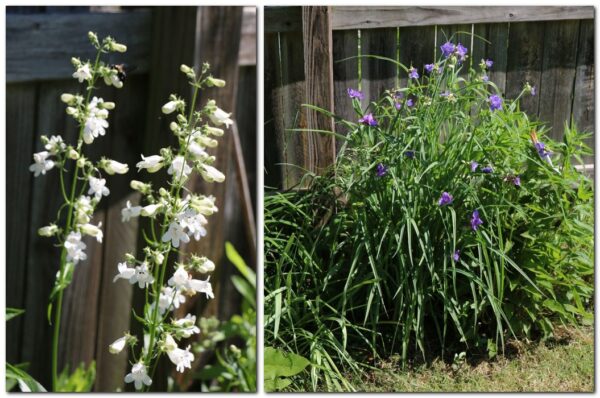
Bees are active on the foxglove beard tongue (Penstemon digitalis) and Ohio spiderwort (Tradescantia ohiensis)
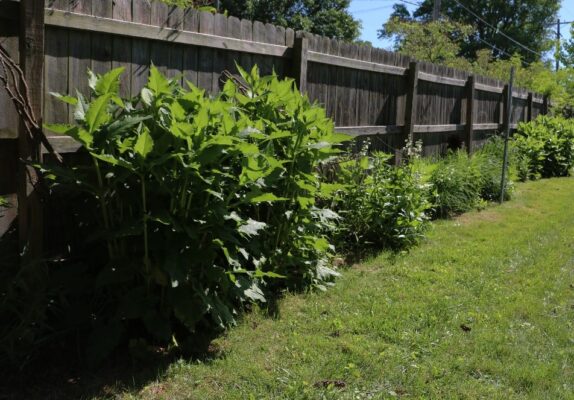
On the outside of the fence is a border of false indigo bushes (Amorpha fruticosa), golden alexander (Zizia aurea) and more
Bring Conservation Home did a site evaluation and recommended a rain garden for a low spot in the yard. This area features buttonbush, blue flag iris, copper iris, obedient plant, swamp milkweed and others planted in 2019.
Diana has been a member of Wild Ones since 2017 and she fondly remembers that her first planting was a palm sedge given to her by Fran Glass, St Louis Wild Ones Keystone Member.
Diana is an avid photographer and won the People’s Choice Award in the 2021 Wild Ones photo contest with a photo of a Swallowtail Butterfly on a Cardinal Flower. Her photos of natives have also been featured in local exhibitions and many of her photos, featuring pollinators, were used in her yard to identify the plants.

